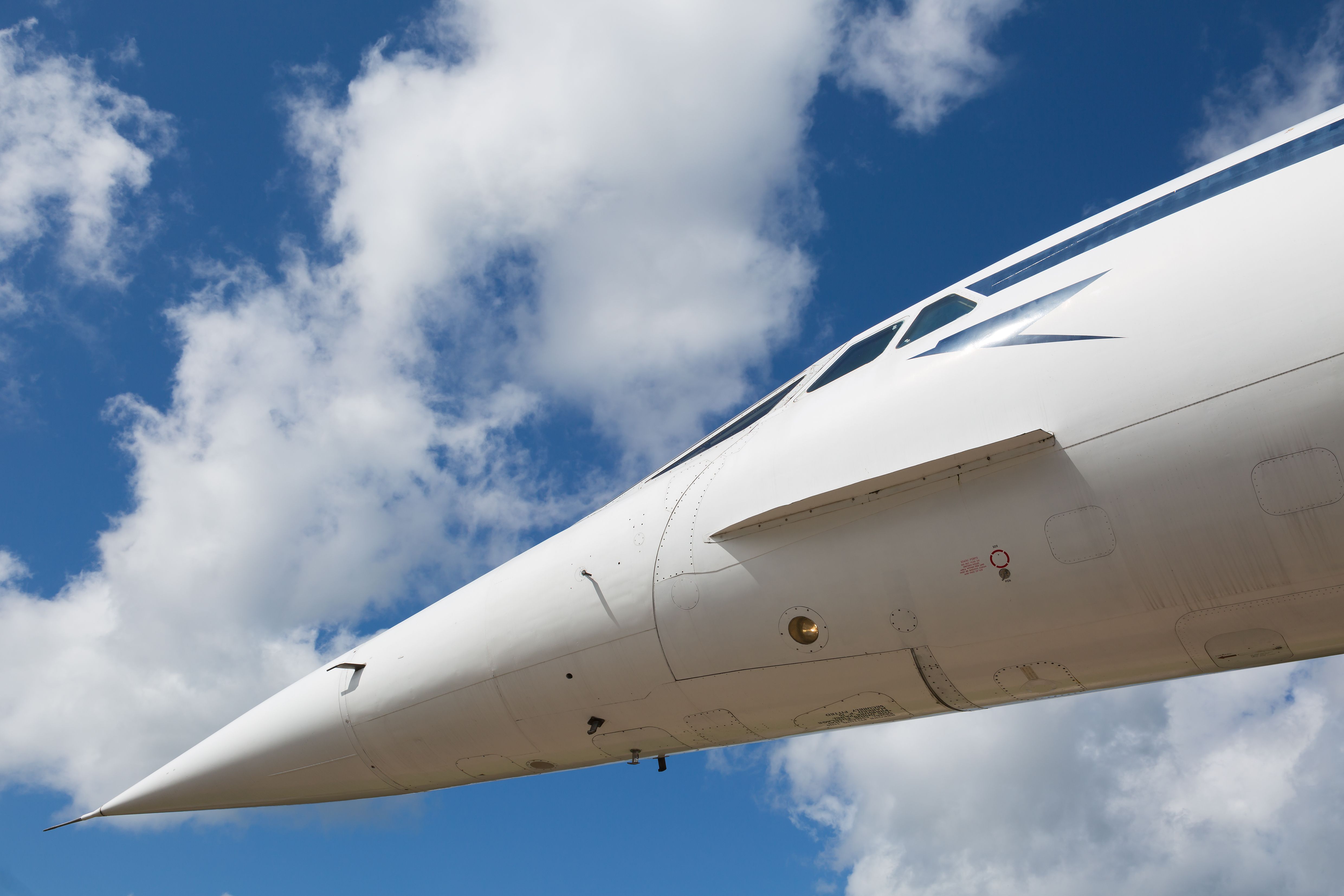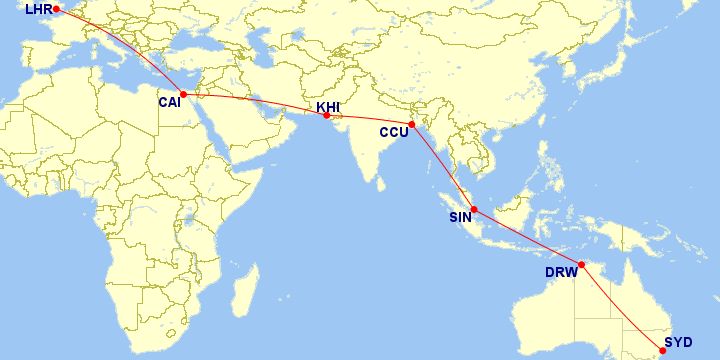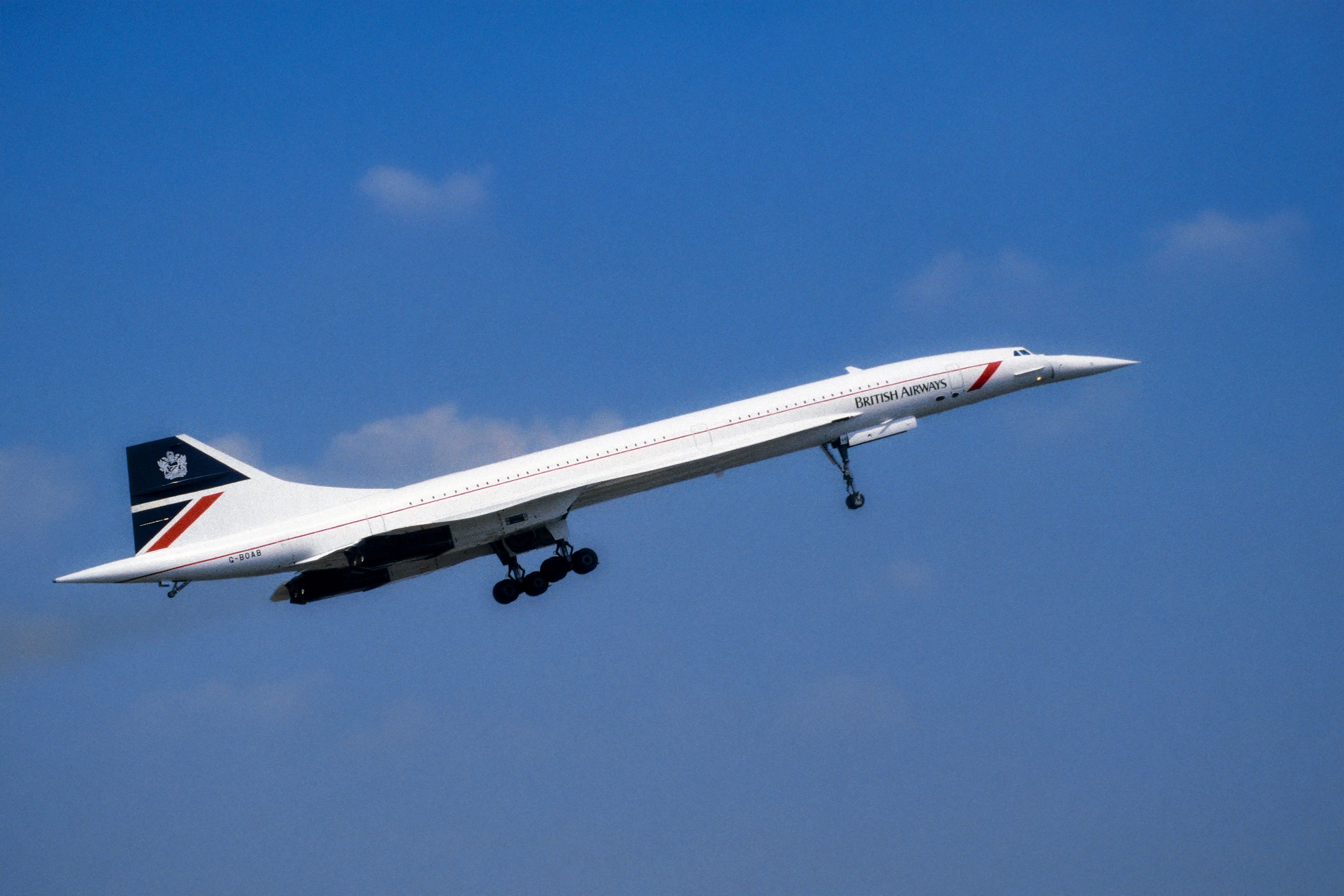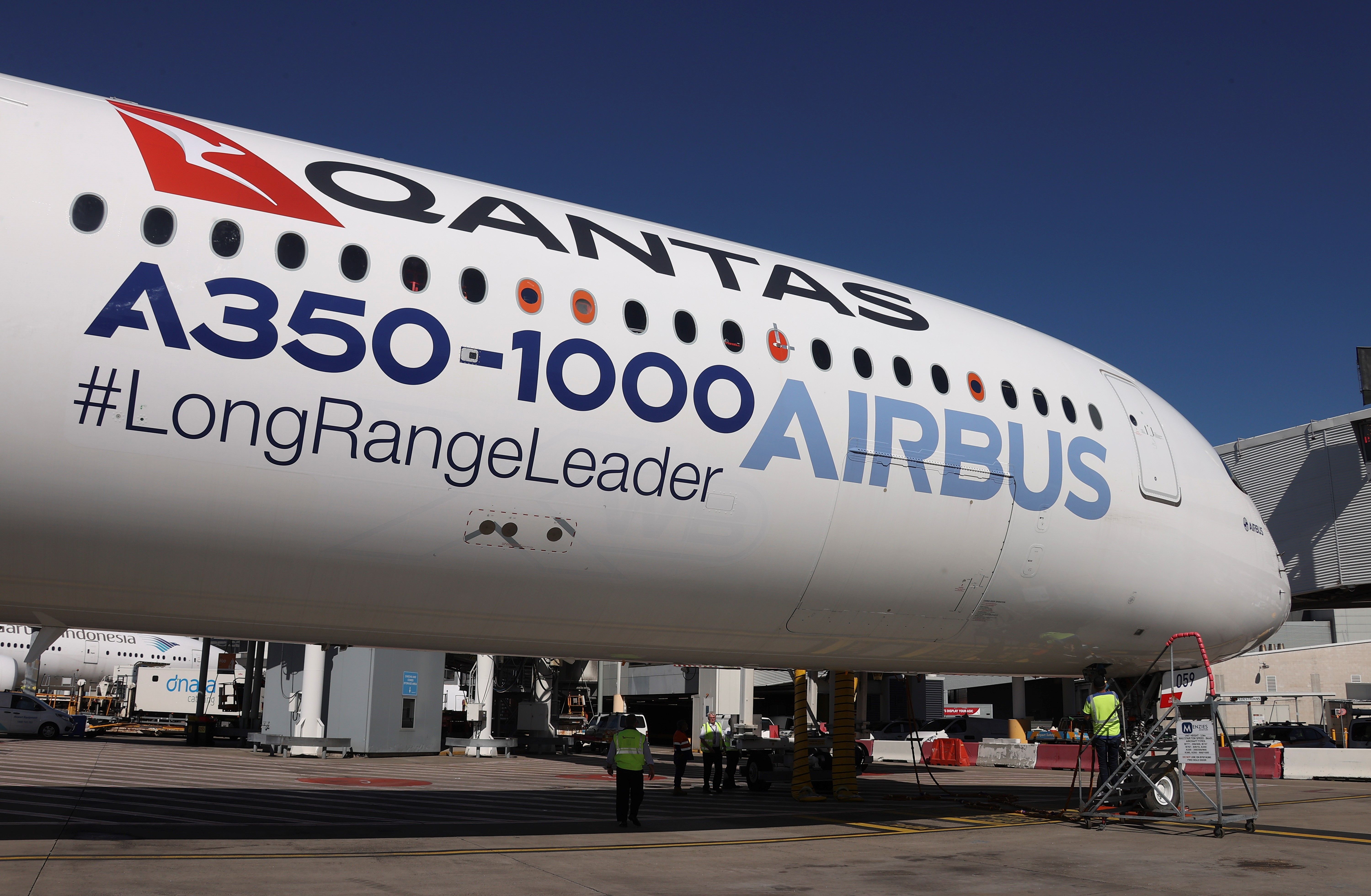At one point, Qantas had four supersonic Concordes on order and intended to put them to work flying to London from Australia. What would have been the flight path and how long would the flight be? Let's explore!
Behind the Qantas Concorde order
Qantas was one of many airlines that placed options on the Concorde aircraft from BAC (the British partner that was building the Concorde with Aérorospatiale). The possibilities entranced them for reducing the legendary Kangaroo route from days into mere hours, and the ocean surrounding the island nation made the idea of sonic booms no consequence for the carrier.
They would then place an option for four aircraft on March 19th, 1964. The Concorde would have flown this route at around Mach 2.5 and would require fuel stops every 4,488.04 miles (7,222.8 km, 3,900 nautical miles).
What was the route?
According to Qantas themselves, the airline planned a complicated multi-stage route from Sydney to London, which would land in Darwin, Singapore, Calcutta, Karachi, and Cairo.
Passengers would have been able to transfer to partner airlines to reach other destinations or stay onboard for the whole journey. After refueling and taking on a fresh local lunch (Satay Chicken in Singapore was mentioned), the aircraft would take off to the next destination.
How long would it have taken?
The flight would be around 13 and a half hours (Ten hours of which would be in the air), and passengers would start with breakfast departing Sydney and would land in London just after lunch (local time obviously, the passengers would have a full day on board).
While this is a long time to cross the face of the planet, it certainly beats out some of the longest flights these days. Currently, Qantas operates a direct Perth to London service (still a half-day trip from Sydney).
Why it never happened?
Qantas would also spend $600,000 in 1970 ($16 million AU today or $11.5 million US) to acquire six Boeing 2707 supersonic aircraft, but they would never be delivered.
Stay informed: Sign up for our daily and weekly aviation news digests.
Likewise, the Concorde production stopped at twenty aircraft (with only British Airways and Air France receiving aircraft), leaving orders like Qantas unfulfilled.
In the end, the rise of the Boeing 747 and other bigger aircraft took the aviation industry in another direction - something that Qantas was more than happy to embrace. They were able to run daily Boeing 747 flights (compared to a scheduled three times a week Concorde flights), which was more economical and profit-generating.
Looking at the route that Qantas planned above, you can see some problems.
- Opposition grew from several nations to ban the Concorde due to its sonic boom. Major regions like Malaysia and India didn't want the supersonic aircraft flying overhead (more so for political reasons than noise), and thus this route would have had to skirt the water borders.
- This change in route would have been longer, but still under the time of current travel between the two nations.
- The fuel burn would have been much higher, and after the oil crisis in the 1970s, it was not very attractive at all for Qantas.
- We can't imagine the aircraft would have flown very fast from Egypt due to sonic booms, as it traveled over Greece, Croatia, Italy, and France.
In the end, the Qantas Concorde journey would have a magical slice of history. The aircraft only ever did a tour flight of Australia but never ran any services further than Singapore from London.
New non-stop service
While the Concorde flight between Sydney and London never saw the light of day, the upcoming Project Sunrise will let passengers fly this route nonstop (albeit at subsonic speeds). Qantas has chosen the Airbus A350-1000 aircraft for this project, which also includes nonstop flights to other destinations, including New York and Paris.
Qantas will continue to use the 787 on some of these routes, but for its longest routes, it will stick to the forthcoming Airbus A350-1000s. The airline announced that is proposing to build a new multi-million-dollar crew training facility in Sydney to train crews for the Project Sunrise nonstop flights to London and New York.
The A350s chosen for these routes will carry just 238 passengers across four classes – First, Business, Premium economy, and Economy. The planes will also have wellbeing zone for all, stocked with snacks and drinks, where passengers can stretch out to prevent health issues such as deep vein thrombosis.
What do you think? Should Qantas have acquired the Concorde? Let us know in the comments.




